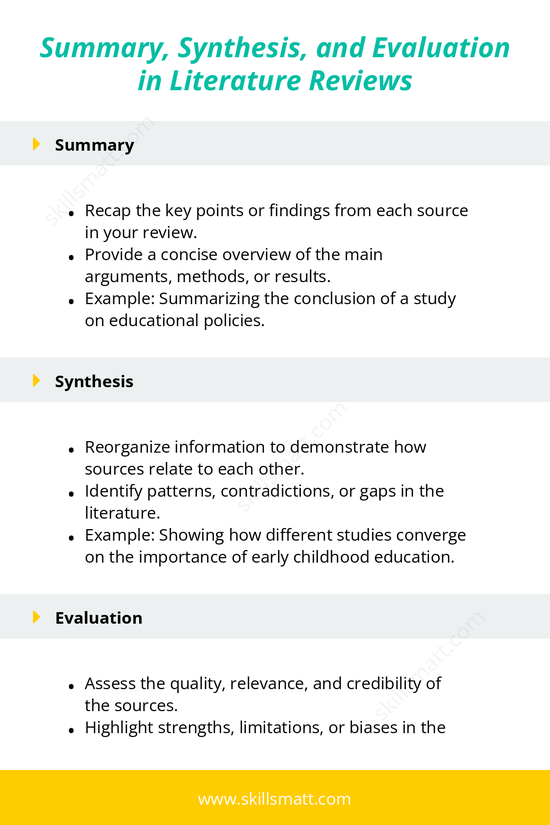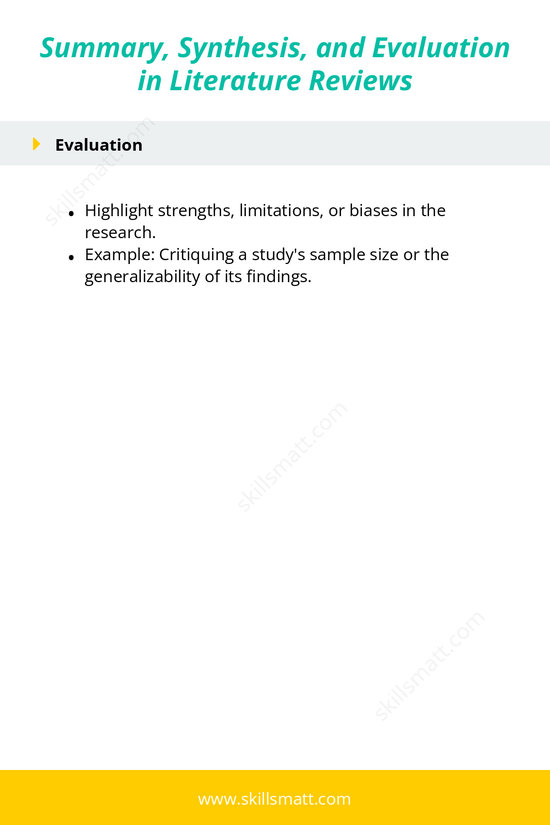Summary, Synthesis, and Evaluation in Literature Reviews
These three components form the backbone of a well-structured literature review:
Summary
- Recap the key points or findings from each source in your review.
- Provide a concise overview of the main arguments, methods, or results.
- Example: Summarizing the conclusion of a study on educational policies.
Synthesis
- Reorganize information to demonstrate how sources relate to each other.
- Identify patterns, contradictions, or gaps in the literature.
- Example: Showing how different studies converge on the importance of early childhood education.
Evaluation
- Assess the quality, relevance, and credibility of the sources.
- Highlight strengths, limitations, or biases in the research.
- Example: Critiquing a study's sample size or the generalizability of its findings.
Integration in Literature Reviews
- Combine summary, synthesis, and evaluation to create a coherent narrative.
- Use synthesis to build connections and evaluation to justify the importance of sources.
- Example: Integrating multiple studies to explain the need for new research in climate change policy.


